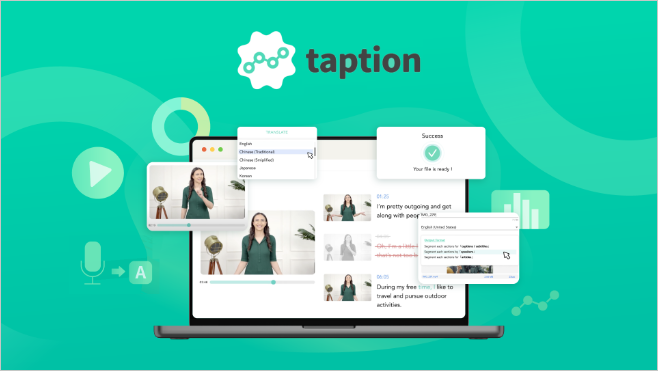Content syndication may be an excellent way for a publisher to showcase its expertise to a larger audience, but it does carry the risk of compromising the SEO of its own site.
With the amount of time that the average internet user spends online increasing to almost 7 hours per day by the end of 2021, publishers have sought to cash in on the spike in demand for content.1 The news content syndication market is projected to grow from an estimated $4.5 billion in the first year of the pandemic to $5.2 billion by 2026.2
Syndication continues to evolve, especially in the methods that content producers and marketers use to increase visibility to a global audience.3
Real simple syndication (RSS) feeds, for instance, became popular in the early 2000s for content to be quickly distributed to subscribers.
These have given way to app-based content syndicators (PDF download).4 These platforms are driven by algorithms that aggregate videos, marketing and digital technology content, as well as news and social media network information.
Given this evolution, this article explores the significance of content syndication and how businesses that originate content can adopt a revised approach to accelerate discovery and improve their search result rankings.
Table of Contents
What Is Content Syndication?
Content syndication is the republishing of original content such as news articles, blog posts, videos, infographics and other content on third-party websites to extend brand reach and improve visibility.
Some of the leading news syndicators include Match Group, EBSCO Industries, InterActiveCorp and Cox Automotive, as well as social media sites Google, Facebook, LinkedIn, Instagram and YouTube.5
For content syndication to be effective, the republished content has to contain backlinks to the originally published article to generate organic traffic.
Below is an example of a syndicated article.

And here is the original blog post:

Although some websites edit content to fit their style or only publish excerpts via online, offline or mobile channels, most pieces of republished content are unedited versions of an entire article.
Finally, in the content syndication process, content producers can either work directly with content syndicators or contract a broker, such as Leading Edge, to act on their behalf.6
Importance of Content Syndication
Content syndication’s importance has expanded in line with the world’s growing dependence on the internet and information-driven services. For example, results from a 2021 Pew Research Center survey reveal that 53% of American adults regarded the internet as essential during the COVID-19 outbreak.7
With more consumers now dependent on the internet, publishers can maximize the value of their best content by republishing it on channels with higher readership. The more strategic the syndication is, the more page views it will likely attract, potentially opening the door to higher sales and revenue.
Readers, on the other hand, can benefit from the content provider’s thought leadership and topical authority, especially when the intent is to appeal to a niche audience.
Finally, content syndication benefits the content marketing industry. This includes small outlets that want to introduce their content to new audiences, free syndication platforms such as LinkedIn, Medium, Quora, Reddit and Slideshare, and cost-per-click (CPC) syndication websites such as Outbrain and Taboola that offer native ads.
 Why Content Syndication Is Hot Again
Why Content Syndication Is Hot Again
Digital audiences now demand more content that is relevant and convenient. For example, 86% of Americans read the news on their digital devices instead of relying on the television or print media.8
In addition to the pandemic-driven shift toward greater digital-based engagement, the availability of consumer data has seen an explosion of new content tailored towards specific audiences. And with more content competing for their attention, publishers need to find new ways to connect with their target audiences by running quality content on more channels.
Advantages of Syndicated Content
Content syndication offers a variety of benefits to publishers, brands and content marketers.
- Cultivates the Brand
Content syndication boosts brand awareness and familiarity through relevant content. Audiences can develop an affinity for the brand, especially when the information suits their interests. - Builds Trust
Serving relevant and meaningful content that meets users’ needs builds trust in the enterprise. - Develops Loyalty
Compelling content that shares insights instead of selling can directly develop brand loyalty and increase customer lifetime value (CLV). - Generates Leads
Organic traffic referrals driven via content syndication can bring in leads that are interested in the content provided. - Establishes Topic Authority and Expertise
Publishers can position themselves as providers of reliable information and valuable insights. - Builds Backlinks
Content providers can earn backlinks for their websites, boosting their search engine results page (SERP) rankings.
In the example below, the original article is linked at the end of the post.
 Disadvantages of Syndicated Content
Disadvantages of Syndicated Content
While it remains a critical strategy for many creators to position their content in front of a larger audience, content syndication also has its downsides.
- May Affect SEO Ranking
If a syndicated page has a higher domain authority, and the original article page is not canonicalized for search engines, the original version could rank lower. Refer to the section below on how to prevent content syndication from hurting the original content’s SEO. - Not All Audiences Are Leads
Many of those who will read the republished content will not bother to click the referral link. - High-Quality Leads Are Not Guaranteed
Not all users who click on backlinks are credible leads. Low-lead quality can skew data in the long-run. - Not a Complete Solution
Content syndication should not be treated as the only method to generate leads. However, when done strategically to complement other marketing efforts, content syndication efforts can produce desired results.
How Does Content Syndication Affect SEO?
Publishers can gain more organic referral traffic to their sites if they have more backlinks, according to an Ahrefs study.9 Greater traffic sends signals to Google that a web page is credible and useful to visitors.
But it takes careful planning, as well as the right partnerships, for content syndication to improve a publisher’s SEO. Publishers that do too little will see limited results, while those that overdo it can end up hurting their SEO efforts.
Best Practices to Prevent Content Syndication From Affecting SEO Strategy
For a content to be considered duplicate, it has to appear identical or nearly the same on at least one web page with a different URL.
When Google detects multiple versions of content, it selects one URL as a canonical version and then will seldom crawl the rest of the duplicate content.10 Remember that Google still considers pages with minor modifications as duplicated content.
While Google does not penalize for duplicate content, if a publisher leaves it up to Google to figure out which page is the original the search engine may end up selecting a duplicate. This will result in the original page being crawled less.
To help avoid syndicating content from negatively affecting SEO, follow these best practices below.
1. Canonicalize
While syndicated content is simply a duplicate version of an original post, publishers can overcome this issue by adding a canonical tag to the original content. The rel=canonical tag alerts Google that the original source is the version that should receive the credit.
Below is an example of a canonical tag.

The canonical link tag does not force Google to index the original content, however, since Google’s choice will still depend on a number of factors, such as the intent of the query and the authority or performance of the website.
In particular, when the website with syndicated content is highly authoritative and has information that ranks for a particular niche, then Google will most likely rank the republished content higher than the original post.11
So, there is still a chance that the syndicated page may appear higher on SERPs instead.
In the case of crawling and indexing syndicated news articles, Google does not guarantee that a news article will appear in Google News.12 However, following best practices such as adding the site operator “site:yoursite.com” may help the content to be discovered.13 Once Google identifies the news report as syndicated, it does not categorize it as copied content (PDF download).14
However, publishers looking to use syndicated content heavily should be wary about the impact it can have on their site. Google wants to show sites that either contain original content and reporting, are considered topic authorities or are local publications.
Google tends to frown on sites that rely on the stories syndicated from another platform for the majority of their content and recommends writing original articles.15
2. Use 301 Redirects as Needed
Upon updating an original article’s link, use a 301 redirect to maintain the backlink from the syndicating website. When users click on the referral link, they will be automatically redirected to the original article’s new URL.
In addition, it also helps Google and other spiders when searching for content that has permanently moved to a new domain.16
Google also recommends 301 redirects over canonical links because these are well-supported and are known by most users.17
Google has also assured that adding 301s will not hurt the pagerank of the website that contains the original post.18
3. Use a Nofollow Link
Google prohibits participating in link schemes, which includes excessive link exchanges to create cross-links between websites, as well as guest posts with overstuffed keyword links.19 Google considers this a violation of its guidelines in an attempt to manipulate search engine rankings.
In this regard, verify if a nofollow tag was added to the syndicated content page so Google can ignore the link when crawling.20 This also helps avoid being suspected of implementing black-hat SEO strategies.
Below is an example of a nofollow tag appended to a hyperlink.

Take note that this is different from a nofollow robots meta tag, which is applicable to all links on a page.
4. Take Action Against Scraped Content
A good practice among content syndicators is to always acknowledge the author and the website where the content was sourced.
Usually, the syndicating site will publish the article with the words, “Originally appeared in,” while other sites contain, “A version of this article originally appeared on” or “This story originally appeared on” with the correct backlink.
Below is an example.

However, content can be copied without consent. Google classifies scraped content as republished copy from other sites that may be either an exact duplicate or contains substantially the same content without adding any value.21 If content has been scraped by another website through bots, then this is a serious copyright issue.22
However, the scraped content won’t affect website search ranking, as confirmed by Google. Even if the scraped content has links to the original site, it can help improve ranking.23
But when too many bots scraping a website affect Google’s crawl speed of said site, or if content scrapers outperform on SERPs, Google recommends taking action by considering a Digital Millennium Copyright Act (DMCA) request or filing a spam report.
5. Focus on Improving Website Quality
Google has admitted that it favors syndicated content from websites with higher authority over original content from a website with low-quality backlinks and low domain authority.24
Some syndicators will also rank higher than originators because Google considers other elements such as additional information found on the site and user comments.25
Content from our partners
In this regard, aside from good quality backlinks, it pays to have unique and original main content with high-level expertise, authoritativeness and trustworthiness (E-A-T).14
How to Start a Content Syndication Strategy
Content syndication remains a preferred option for many marketers. To expand one’s audience and generate more leads, publishers must follow content syndication best practices that will optimize their strategy.
1. Establish Goals for Content Syndication
Be very clear and specific about objectives and goals when starting down the content syndication path. This includes attracting more readers, expanding reach to other geographic markets, increasing authority in the industry or improving online reputation.
2. Research the Target Customer
Discover the potential customer’s pain points by conducting online surveys, assessing online reviews, social listening and consulting with in-house sales teams. These approaches will help to identify what topic to write about with a view to syndication.
3. Develop Copywriting and Outreach Activities
Assemble a team that can execute a content syndication plan. These stakeholders will also identify key performance indicators (KPIs) to monitor a campaign’s performance.
4. Create Exceptional Content
Write content that has the potential to address customer pain points. Infographics and charts can also improve not only the value of the content but also its visual impact. However, avoid explicitly selling or advertising anything, as this will frustrate readers.
In addition, consider syndicating existing original content that has already performed well in terms of views and engagement.
5. Research Where to Republish
Search for relevant syndicating content websites, preferably within the same industry. Narrow down the choices according to reputation, active audiences and openness to developing a content syndication partnership.
Take for example Airbnb’s collaboration with Flipboard in syndicating content on travel experiences on the magazine app’s platform.26
Airbnb syndicated its original content that was based on client experiences. The campaign delivered 38,000 referral visits to Airbnb.com — a 9% click-through rate (CTR) based on the 440,000 Flipboard viewers who “Hearted” the Airbnb content.
6. Develop a Strategy
Decide whether to pay for distribution to more audiences or leverage free syndication networks to drive referral traffic at no cost. Do not forget to consider how many websites to syndicate content to as well.
7. Measure the Results
Find out the return on investment (ROI) of the content syndication campaign by using relevant metrics to gauge its success. An ideal metric to consider is the conversion rate or how fast leads convert in the sales pipeline relative to other platforms.
8. Update Strategies as Needed
Using results from Step 7, evaluate how the syndication process can be improved. This may involve revising the copy or assessing whether the syndication platform still aligns with the campaign’s goals. In the long run, the target audience may also change and may need new information.
Final Thoughts
Information that resonates with target audiences can be optimized by republishing on new channels. With content syndication, publishers can extend their reach to the right audiences, increase brand awareness, boost reputation and drive more traffic.
However, they still need to proceed with caution, given that this strategy also comes with the risk that it may undermine either their SEO efforts or harm their wider reputation.
Nevertheless, content syndication will continue to be an important marketing strategy that will complement other initiatives to accelerate addressable customers’ buy-in. With the right content paired with a strategically aligned publishing partner, publishers have a better chance of being seen while climbing the SERP rankings.
- 90.63% of Content Gets No Traffic From Google. And How to Be in the Other 9.37% [New Research for 2020]
- Consolidate Duplicate URLs with Canonicals | Google Search Central | Documentation
- How does Google separate popularity from authority?
- Best practices for your article pages – Publisher Center Help
- Help Google News discover your web crawled content – Publisher Center Help
- General Guidelines
- If I report the same news story as someone else, is that duplicate content?
- Avoid Duplicate Content | Google Search Central | Documentation
- What are the advantages of 301 redirects over rel=”canonical”?
- Gary 鯨理/경리 Illyes on Twitter: “30x redirects don’t lose PageRank anymore.” / Twitter
- Link Schemes | Google Search Central | Documentation
- Qualify Outbound Links for SEO | Google Search Central | Documentation
- Scraped Content | Google Search Central | Documentation
- English Google Webmaster Central office-hours hangout
- Can you benefit from content scraped from your site?
- English Google SEO office-hours from June 18, 2021
- English Google Webmaster Central office-hours hangout
- Marketing Case Study: How Airbnb and Flipboard Teamed Up to Introduce Experiences




 Why Content Syndication Is Hot Again
Why Content Syndication Is Hot Again Disadvantages of Syndicated Content
Disadvantages of Syndicated Content 








